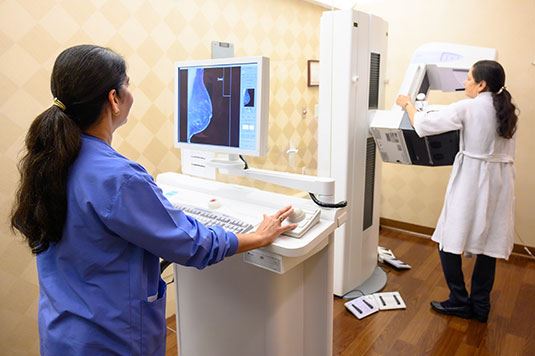
How Nurse Navigators Improve Breast Cancer Care
Predicting Breast Cancer Risk
Posted: October 2019

Since 2013, the Washington Women’s Center has included a breast cancer risk assessment as part of its standard mammography screening. This assessment, based on the Gail Model, uses the statistical analysis of invasive breast cancer within various populations to determine an individual’s risk over a set period of time.
About the Risk Assessment Tool
Developed more than two decades ago by the NCI Division of Cancer Epidemiology and Genetics, the Gail Model Breast Cancer Risk Assessment Tool has since helped millions of women understand their unique breast cancer risk using biodata, such as:
- Age
- Age at the start of menstruation
- Age at first live birth of a child
- Number of first-degree relatives (mother, sisters, daughters) with breast cancer
- Number of previous breast biopsies (whether positive or negative)
- Presence of atypical hyperplasia in a biopsy
Breast Cancer Risk Assessment Tool
If you would like to take the Breast Cancer Risk Assessment Tool provided by the National Cancer Institute, click here.
Notes and Limitations of the Tool
The following studies were used in developing this statistical model and assessment tool:
- The Breast Cancer Detection Demonstration Project (BCDDP), which studied 280,000 white women aged 35 to 74 years, and from the NCI Surveillance, Epidemiology, and End Results (SEER) Program.
- The Women’s Contraceptive and Reproductive Experiences (CARE) Study and from SEER data, which included 1,607 black/African America women with invasive breast cancer and 1,637 without.
- Asian-American Breast Cancer Study (AABCS) and SEER data, which included 597 Asian and Pacific Islander women with invasive breast cancer and 966 without.
- The San Francisco Bay Area Breast Cancer Study (SFBCS) and the California Cancer Registry and SEER Program, which included 1,086 Hispanic women with invasive breast cancer and 1,411 without.
While this tool has shown to provide accurate estimates of breast cancer risk in white women, it may underestimate risk among black/African American women with previous biopsies, as well as non-native Hispanic women. Researchers are actively collecting data in these subgroups to improve results.
To learn more about the Washington Women's Center, click here. To contact a Washington Hospital Nurse Navigator, call 510.818.7536.
Posted October, 2019
